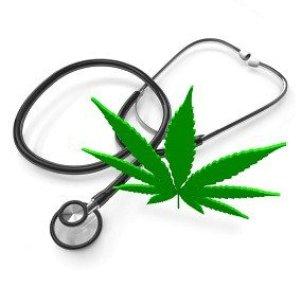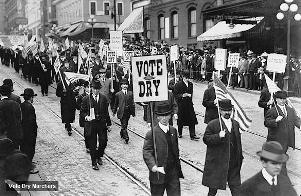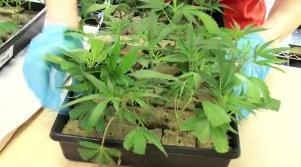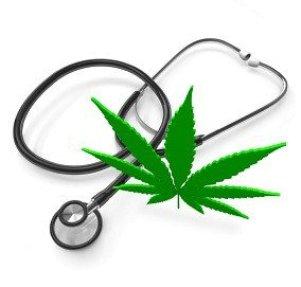Latest
Brown Vetoes California Hemp Bill, Criticizes Federal Ban
House Moves Bill to Extend US Drug Laws Overseas
US Drug Policy Would Be Imposed Globally By New House Bill
Patient Advocates Accuse Obama of Hypocritical, Aggressive Policy on Medical Marijuana
PRESS RELEASE
Americans for Safe Access
For Immediate Release: October 7, 2011
Contact: ASA Media Liaison Kris Hermes or ASA Chief Counsel Joe Elford
Patient Advocates Accuse Obama of Hypocritical, Aggressive Policy on Medical Marijuana
Millions of taxpayer dollars spent undermining state and local medical marijuana laws
Sacramento, CA -- The Obama Justice Department (DOJ) held a press conference in Sacramento today announcing an array of enforcement actions against medical marijuana producers and distributors as well as landlords throughout California. Patient advocates are calling President Obama's enforcement effort harmful and unnecessary, representing a stark contradiction to his pledge of disengagement in medical marijuana states. The DOJ claimed it was carrying out civil and criminal enforcement actions against medical marijuana providers and sending "warning" letters to property owners leasing to dispensary operators.
"Aggressive tactics like these are a completely inappropriate use of prosecutorial discretion by the Obama Administration," said Joe Elford, Chief Counsel with Americans for Safe Access (ASA), the country's largest medical marijuana advocacy group. "President Obama must answer for his contradictory policy on medical marijuana." On the campaign trial and in the White House, President Obama pledged that he was "not going to be using Justice Department resources to try to circumvent state [medical marijuana] laws."
This attack is the latest in a long line of federal intimidation tactics employed over the past few months by such agencies as Housing and Urban Development (HUD), the Federal Deposit Insurance Corporation (FDIC), the Internal Revenue Service (IRS) and the Department of Justice (DOJ). President Obama's DOJ has conducted well over 150 federal raids in at least 7 states since taking office and his U.S. Attorneys sent letters earlier this year threatening local and state officials in 10 states with criminal prosecution if they adopted proposed medical marijuana laws.
By sending threatening letters to landlords, President Obama is taking a cue from his predecessor George W. Bush, whose Justice Department sent similar letters to more than 300 property owners throughout California in 2007. Despite the seriousness of letters sent by the DOJ under Bush, no criminal or forfeiture enforcement actions were ever pursued. It's unclear if the federal government has the resources or inclination to act on these new threats in a significant way, but for the price of postage they have engaged in wholesale intimidation of the medical marijuana community.
Advocates argue that states should be allowed to enforce their own public health laws, including those concerning medical marijuana. "It is unconscionable that the federal government would override local and state laws to enforce its will over the will of the people," said ASA spokesperson Kris Hermes. "States must be allowed to enforce their own laws without harmful interference from the Obama Administration." California Attorney General Kamala Harris was apparently not warned by the DOJ about the heightened federal enforcement effort before today.
The DOJ enforcement effort comes as hundreds of demonstrations against Wall Street are continuing to occur across the country. These protests are, at least in part, questioning the federal government's allocation of limited resources. Meanwhile, President Obama has chosen to expend federal resources to crack down on medical marijuana in states that have legalized its use. "By shutting down dispensaries, the Obama Administration is not only pushing legal patients into the illicit market," continued Hermes, "it's also wasting taxpayer dollars at a time of fiscal crisis."
Further information:
Redacted example of U.S. Attorney letter to landlords of California medical marijuana dispensaries: http://AmericansForSafeAccess.org/downloads/US_Attorney_Landlord_Letter.pdf
# # #
With over 50,000 active members in all 50 states, Americans for Safe Access (ASA) is the largest national member-based organization of patients, medical professionals, scientists and concerned citizens promoting safe and legal access to cannabis for therapeutic use and research. ASA works to overcome political and legal barriers by creating policies that improve access to medical cannabis for patients and researchers through legislation, education, litigation, grassroots actions, advocacy and services for patients and the caregivers.
Race & Justice News: Blacks Three Times as Likely as Whites to be Searched in Traffic Stops
| |||||||
October 7, 2011 Race & Justice News"THE COLLAPSE OF AMERICAN JUSTICE"The late law professor William J. Stuntz investigates what he calls "the collapse of American justice" in Salon. The article examines America's high incarceration rate, and assesses the role of official discretion, discrimination against minority suspects and victims, and the swing toward harsh punishment as the main factors leading to the justice system's failure. Stuntz argues that laws that turn large segments of the population into offenders, such as speeding and drug laws, provide police officers with excessive official discretion that contributes to racial profiling. Stuntz states that, "too much law amounts to no law at all: when legal doctrine makes everyone an offender, the relevant offenses have no meaning independent of law enforcers' will," and points to the fact that blacks are nine times more likely to be arrested for drug use than whites, despite both groups having similar rates of drug use. Direct election of many judges and prosecutors, coupled with the increased electoral power of suburbs and their relative distance from inner city problems, is also identified as an explanation for increased racial disparities. ALABAMA PRISON REFUSES TO ALLOW BOOK ON TREATMENT OF SOUTHERN BLACKSThe New York Times reports that an inmate is suing the Alabama Department of Corrections for denying him access to a book that details the plight of Southern African Americans during the time between the end of the Civil War and World War II. The Kilby Correctional Facility reportedly would not allow Mark Melvin to read Slavery by Another Name because it was deemed to be "incendiary" and a "security threat." Officials claimed that the book, which explores the convict leasing system, which became nearly indistinguishable from slavery, could incite “violence based on race, religion, sex, creed, or nationality, or disobedience toward law enforcement officials or correctional staff.” The book's author, Wall Street Journal reporter Douglas A. Blackmon, calls that claim "absurd," and Melvin's lawyer argues that the withholding of the book is essentially a reflection of the country's refusal to own up to its racial history. BLACKS THREE TIMES AS LIKELY AS WHITES TO BE SEARCHED IN TRAFFIC STOPSA special report by the Bureau of Justice Statistics has found that black drivers in 2008 were three times as likely to have their cars searched during traffic stops as whites. The study, which looked at contact between citizens and law enforcement, also found that traffic stops involving blacks were roughly twice as likely to result in a search as those involving Hispanics. The survey showed that African Americans were slightly more likely to face multiple contacts with police officers, but that blacks were about as likely to be pulled over in traffic stop as whites and Hispanics. However, when pulled over blacks were more likely than whites and Hispanics to be arrested, while both blacks and Hispanics were more likely to receive tickets than whites. Blacks were also more likely to have force used or threatened against them by police officers. REEVALUATING EXPLANATIONS FOR RACIAL DISPARITIESDarnell F. Hawkins attempts to sort through explanations for the racial disparities present in the American criminal justice system in light of declining crime rates, and criticizes academics for failing to make significant progress in producing cogent theories. In Things Fall Apart: Revisiting Race and Ethnic Differences in Criminal Violence amidst a Crime Drop he argues that the presence of constant racial disparities in the criminal justice system despite drops in crime rates and changes in social conditions has undermined many theories meant to explain racial disparities. Much of this, according to Hawkins, is due to the tendency of researchers to rely heavily on quantitative skills and narrow variables and subjects. The use of more encompassing theories, such as Robert Blauner's internal colonialism framework, is offered as a possible path forward in answering longstanding questions about racial disparities in the criminal justice system.
| |||||||
Obama DOJ Ratchets Up War Against Medical Marijuana [FEATURE]
Press Release: Obama Administration Escalates War on Medical Marijuana Patients
Drug Policy Alliance
Scalia Criticizes Scope of Federal Drug Laws

Obama Pardon/Clemency Record Even Stingier Than Bush's, Washington Post Notes
[image:1 align:right caption:true]The Washington Post

Obama Administration's War on Medical Marijuana Continues to Escalate
[inline:sfdispensaryraid.jpg align=right caption="DEA and SFPD dispens
Do You Read Drug War Chronicle?
Chronicle Film Review: Prohibition
This Week in History
Call-In: The National Criminal Justice Commission Act
Mexico Drug War Update
IRS Rules Against Oakland Marijuana Dispensary, Demands Millions
This Week's Corrupt Cops Stories
What's New @ Drug War Facts, Volume 1, Issue 5
WHAT'S NEW @ Drug War Facts, Volume 1, Issue 5
WHAT'S NEW @ Drug War Facts
Volume 1, Issue 5
September 2011
==========
FEATURE ARTICLE: 9/11 and the War on Drugs
September 11, 2011 marked the 10th anniversary of the tragic events that now comprise the universal acronym 9/11. In years that followed this incomprehensible attack, a shocked, scared and angry nation looked for answers. Why did this happen? Who was to blame?
A 2006 University of Pittsburgh Law Review article explained, "Well before the twenty-first century, the 9/11/01 terrorist attacks on the World Trade Center and the Pentagon, and the resulting War on Terror, the country and Supreme Court already had been fighting another war for thirty years—the so-called 'War on Drugs'" (1)
By 2001, 'drugs' had become a societal villain. Notably, that year marked the 30th anniversary of Richard Nixon's declaration of War on Drugs, "America’s public enemy number one in the United States is drug abuse. In order to fight and defeat this enemy, it is necessary to wage a new, all-out offensive." (2)
The Transform Drug Policy Foundation explained the mindset that bridged 'drugs' to terrorism, "Like the war on terror, the war on drugs is framed as a response to an exceptional, existential threat to our health, our security, and indeed the very fabric of society. The 'Addiction to narcotic drugs' is portrayed as an 'evil' the international community has a moral duty to 'combat' because it is a 'danger of incalculable gravity' that warrants a series of (otherwise publicly unacceptable) extraordinary measures." (3)
In the wake of 9/11, Congress passed the PATRIOT Act to combat these two now conflated 'evils.' "This legislation substantially increased the authority of the government in surveillance, border security, terrorism policing, money laundering policing, and intelligence gathering," read a 2011 Drexel University Law Review article. (4)
The RAND Corporation mapped this new web of federal authority. "Drug-related activities in the United States span a number of agencies," which investigate and prosecute "drug, alien, and weapon smuggling, as well as terrorism-related smuggling." (5)(6)
However, The 9/11 Commission Report released in 2004 saw the connection between drugs and terrorism differently, "Although the FBI’s counterterrorism budget tripled during the mid-1990s, FBI counterterrorism spending remained fairly constant between fiscal years 1998 and 2001. In 2000, there were still twice as many agents devoted to drug enforcement as to counterterrorism." (7)
The FBI's "priorities were driven at the local level by the field offices, whose concerns centered on traditional crimes such as white-collar offenses and those pertaining to drugs and gangs. Individual field offices made choices to serve local priorities, not national priorities." (7)
The report went on to question the link between the laundering of drug money and the terrorist attacks, "While the drug trade was a source of income for the Taliban, it did not serve the same purpose for al Qaeda, and there is no reliable evidence that Bin Ladin was involved in or made his money through drug trafficking." (7)
The final chapters of The 9/11 Commission Report recommended a Global Strategy to fight terrorism. The Commission's strategy unilaterally excluded drugs and the drug war from all Recommendations. Drugs as a causative factor for 9/11 and their connection terrorism was nominal to non-existent.
===
This article was written in loving memory of the 2,977 people who lost their lives as a result of 9/11.
===
(1) Ashdown, Gerald G., "The Blueing of America: The Bridge Between the War on Drugs and the War on Terrorism," University of Pittsburgh Law Review, Summer 2006.
- http://lawreview.law.pitt.edu/issues/67/67.4/Ashdown.pdf
(2) "Ending the Drug War: a Dream Deferred," Law Enforcement Against Prohibition, June 2011.
- http://mapinc.org/url/8HRddb4I
(3) "The War on Drugs: Undermining Human Rights," from the "Count the Costs: 50 Years of the War on Drugs," Transform Drug Policy Foundation, 2011.
- http://mapinc.org/url/TJwPM2az
(4) Sciullo, Nick J., "The Ghost in the Global War on Terror: Critical Perspectives and Dangerous Implications for National Security and the Law," Drexel Law Review, Spring 2011.
- http://papers.ssrn.com/sol3/papers.cfm?abstract_id=1691140
(5) "The Challenge of Domestic Intelligence in a Free Society: A Multidisciplinary Look at the Creation of a U.S. Domestic Counterterrorism Intelligence Agency," RAND Corporation, 2009.
- http://www.rand.org/pubs/monographs/2009/RAND_MG804.pdf
(6) RAND Corporation graphical map of U.S. agencies involved counter-terrorism or counter-drug/money laundering.
- http://mapinc.org/url/ht6vItZ5
(7) "The 9/11 Commission Report: Final Report of the National Commission on Terrorist Attacks Upon the United States," National Commission on Terrorist Attacks Upon the United States, 2004.
- http://www.gpoaccess.gov/911/pdf/fullreport.pdf
==========
DRUG WAR FACTS is DRUG POLICY FACTS
The URLs http://www.drugpolicyfacts.org and http://www.drugpolicyfacts.com can now both be used to reference Drug War Facts. In other words, both URLs redirect to http://www.drugwarfacts.org.
Two new URLs, same great source of reliable, fact-based information on drugs and drug policy — 1,700+ Facts (direct quotes) drawn from over 800 sources.
==========
NEW PREGNANCY SUB CHAPTERS
Six new sub-chapters of the Pregnancy Chapter in Drug War Facts offer Facts concerning the use of these substances during pregnancy:
"Pregnancy - Alcohol"
- http://www.drugwarfacts.org/cms/Pregnancy#Alcohol
"Pregnancy - Cocaine and Crack"
- http://www.drugwarfacts.org/cms/Pregnancy#Cocaine
"Pregnancy - Marijuana"
- http://www.drugwarfacts.org/cms/Pregnancy#Marijuana
"Pregnancy - Methamphetamine"
- http://www.drugwarfacts.org/cms/Pregnancy#Meth
"Pregnancy - Opiates"
- http://www.drugwarfacts.org/cms/Pregnancy#Opiates
"Pregnancy - Tobacco"
- http://www.drugwarfacts.org/cms/Pregnancy#Tobacco
"Interdiction - Drugs and Terrorism"
This new sub-chapter of the [Drug] Interdiction Chapter addresses the conflation of drugs with terrorism in memory of the tragic events that occurred on September 11, 2001 as noted in the Feature Article.
- http://www.drugwarfacts.org/cms/Drug_Interdiction#Terrorism
"Environment - Mycoherbicides"
Mycoherbicides are highly toxic fungi that have been tested and suggested for use in eradicating drug crops, even though they contain chemical toxins that run counter to the United Nations Biological Weapons Convention.
- http://www.drugwarfacts.org/cms/Environment#Mycoherbicides
"Cocaine & Crack - Coca Leaf"
There are substantial differences between the natural, relatively safe coca leaf grown in the Andes and the sometimes deadly processed cocaine and crack, but the two share one commonality - they're both illegal.
- http://www.drugwarfacts.org/cms/Cocaine#Leaf
==========
NEW SOURCES
"America’s Children: Key National Indicators of Well-Being," Federal Interagency Forum on Child and Family Statistics, 2011.
A wealth of statistics on the status of children in the United States.
- http://www.childstats.gov/pdf/ac2011/ac_11.pdf
"TANF Policy Brief," CLASP, February 2011.
The issues concerning the Temporary Assistance for Needy Families (TANF) program and its mandatory drug testing program.
- http://www.clasp.org/admin/site/publications/files/0520.pdf
"Neutralizing the Gendered Collateral Consequences of the War on Drugs," New York University School of Law, April 2011.
The impact on women who are disproportionately impacted by sanctions related to felony drug convictions.
- http://mapinc.org/url/HOc72M8O
"Risks of Using Biological Agents in Drug Eradication: A briefing paper with emphasis on human health," The Sunshine Project, 2001.
The use of pathogenic fungi to forcibly eradicate drug crops and the consequences of such use.
- http://www.sunshine-project.org/publications/bk/pdf/bk4en.pdf
"Coca yes, cocaine, no? Legal options for the coca leaf," Transnational Institute, May 2006.
Overview of the Bolivia government's attempt to exempt coca leaf from the 1961 Single Convention Treaty.
- http://www.tni.org/sites/www.tni.org/files/download/debate13.pdf
==========
NEW TABLES
- "Provisions of Selected Federal Law and the Corresponding Benefits That May Be Denied to Certain Drug Offenders"
Displays the various government programs that deny federal benefits based on drug convictions or suspected drug use.
United States Government Accountability Office, September 2005.
- http://www.drugwarfacts.org/cms/Families#Benefits
"Federal Agencies that Investigate and Enforce Drug Laws"
Displays agencies of the United States Government that investigate, collect information, conduct surveillance and enforce laws concerning the trafficking and money laundering of illicit drugs. This list may not be all inclusive.
RAND Corporation, 2009.
- http://www.drugwarfacts.org/cms/Drug_Interdiction#Agencies
==========
UPDATED TABLES
Each September, the "Crime in the United States" data from the FBI Uniform Crime Report and the National Survey on Drug Uses and Health (NSDUH) estimates from the Substance Abuse and Mental Health Services Administration are released. These tables in the Crime and Drug Usage Chapters have been updated to add 2010 statistics.
- "Total, marijuana and drug arrests by year"
"Although the intent of a 'War on Drugs' may have been to target drug smugglers and 'King Pins,' over half (52.1%) of the 1,638,846 total 2010 arrests for drug abuse violations were for marijuana, a calculated total of 853,839. Of those, an estimated 750,591 people (45.8%) were arrested for marijuana possession alone. From 1996-2010, there were 10.1 million arrests for marijuana possession and 1.4 million arrests for the sales and trafficking of marijuana, equaling a total of 11.5 million marijuana arrests during that fifteen year time frame."
"Crime in the United States 2010," FBI Uniform Crime Report, (Narrative by Mary Jane Borden), September 2011.
- http://www.drugwarfacts.org/cms/Crime#Total
- "Marijuana arrests percent share of total drug arrests by year"
"This table shows the growing dominance of marijuana arrests among total drug arrests in the U.S., rising from a percentage of 39.9% of total drug arrests in 1995 to 52.1% of such arrests in 2010."
"Crime in the United States 2010," FBI Uniform Crime Report, (Narrative by Mary Jane Borden), September 2011.
- http://www.drugwarfacts.org/cms/Crime#Share
- "Drug and marijuana arrests percent change over prior year"
"Total Arrests in the United States have ranged between 13.1 million and 15.3 million over the fifteen year period (1996-2010), with the annual percent change for that time span averaging -0.9%. ... The percentage change values for marijuana arrests confirm their upward trend. Total marijuana arrests in 2010 (853,839) were +45% higher than those in 1995 (588,964)."
"Crime in the United States 2010," FBI Uniform Crime Report, (Narrative by Mary Jane Borden), September 2011.
- http://www.drugwarfacts.org/cms/Crime#Prior
- "NSDUH - Percentage change in usage by substance"
"If the stated goals [of the 2003 National Drug Control Strategy] were a 10% reduction in two years, five years or nine years from 2002, it can safely be said that the plan fell short of its goals, for usage of the aforementioned substances grew in almost all categories during all of the time frames covered in this table with a few notable exceptions."
Substance Abuse and Mental Health Services Administration, (Narrative by Mary Jane Borden), September 2011.
- http://www.drugwarfacts.org/cms/Drug_Usage#Change
- "NSDUH - Lifetime (any) usage by substance"
Note: "Lifetime" use means use of a listed drug at least once.
Through 2010, nine years from the baseline year of 2002, lifetime" illicit drug use had increased by +10.4% to an estimated 119.5 million users or 47.1% (almost half) of the defined population. "Lifetime" users of marijuana, the most widely used illicit drug, grew to 106 million or 41.9% of the defined population. ... At respective rates of +56.7% and +17.4%, "Ecstasy" and "Pain Relievers" experienced the fastest growth among all illicit drugs."
Substance Abuse and Mental Health Services Administration, (Narrative by Mary Jane Borden), September 2011.
- http://www.drugwarfacts.org/cms/Drug_Usage#Lifetime
- "NSDUH - Monthly 'current' usage by substance"
Note: "Monthly" use means use of a listed drug at least once per month.
"Through 2010, monthly users of all illicit drugs had increased to 22.6 million at rate of +15.9% since 2002. Monthly marijuana users in 2010 equaled 17.3 million, reflecting an increase of +19.1% over 2002. The two drug categories experiencing the fastest monthly user population growth between 2002 and 2010 were “Heroin” at +44% and "Pain Relievers" at +16.5%."
Substance Abuse and Mental Health Services Administration, (Narrative by Mary Jane Borden), September 2011.
- http://www.drugwarfacts.org/cms/Drug_Usage#Current
==========
DRUG TRUTH NETWORK SEGMENTS
Approximately once per week, Drug War Facts Editor Mary Jane Borden contributes a 3-minute segment to the Drug Truth Network's 420 Drug War News http://www.drugtruth.net/cms/views/latest_420. The transcripts of these segments are also posted to the DrugSense Blog at http://drugsense.org/blog/category/facts.
7/3/11 DWF segment for Drug Truth Network - What is the Posse Comitatus Act?
MP3: http://www.drugtruth.net/cms/node/3449
Transcript: http://drugsense.org/blog/drug-policy/posse-comitatus-act
7/6/11 DWF segment for Drug Truth Network - Does the military participate in the drug war?
MP3: http://www.drugtruth.net/cms/node/3454
Transcript: http://drugsense.org/blog/drug-policy/military-and-the-drug-war
7/11/11 DWF segment for Drug Truth Network - Has Swiss drug policy been effective?
MP3: http://www.drugtruth.net/cms/node/3461
Transcript: http://drugsense.org/blog/drug-policy/swiss-drug-policy
7/27/11 DWF segment for Drug Truth Network - What is the Single Convention Treaty? - *50th Drug Truth Network segment!
MP3: http://www.drugtruth.net/cms/node/3481
Transcript: http://drugsense.org/blog/drug-policy/single-convention-treaty
8/3/11 DWF segment for Drug Truth Network - What is the difference between coca leaf and cocaine?
MP3: http://www.drugtruth.net/cms/node/3488
Transcript: http://drugsense.org/blog/drug-policy/coca-leaf
8/20/11 DWF segment for Drug Truth Network - How many parents use marijuana?
MP3: http://www.drugtruth.net/cms/node/3512
Transcript: http://drugsense.org/blog/drug-policy/parents-using-pot
9/11/11 DWF segment for Drug Truth Network - What was the Rainbow Farm?
MP3: http://www.drugtruth.net/cms/node/3534
Transcript: http://drugsense.org/blog/drug-policy/what-was-the-rainbow-farm
==========
FAVORITE FACTS
Number of Parents who Use Marijuana, Mary Jane Borden, August 2011.
- http://drugwarfacts.org/cms/node/2132
(2010 - number of parents and children who use marijuana) "A projection of the number of parents who use cannabis can be computed by comparing U.S. Census estimates with data from the Monitoring the Future study.
"The U.S. Census estimates that families in households with minor children - married and single parent male or female - comprised roughly 62 million persons in 2010. An average of the percentage use figures in the 2010 Monitoring the Future study indicate that around 15% of those within the childbearing years of age 20-35 consume cannabis monthly, with about 5% being daily users. Daily use likely equates to medical use. Simple multiplication of these two percentages times the estimated 62 million persons heading family households places the number of marijuana using parents in the United States as high as 9.5 million and patient parents near 3 million.
"The U.S. Census also estimates the number of children ages 12-17 at 24.8 million. Monitoring the Future projects the percentage of adolescents who currently use cannabis at 13.8%. The result of multiplying the two figures is roughly 3.4 million young people who use cannabis at least monthly."
==
"Pursuing the Perfect Mother: Why America's Criminalization of Maternal Substance Abuse is Not the Answer," Pace Law Faculty Publications, 2008.
- http://mapinc.org/url/aq3GUKK4
(pregnancy - policies toward pregnant women) "The American “fetal protection” movement is unique among developed and developing nations. While other nations also have populations of poor women whose lives are highly dysfunctional or who are addicted to alcohol and other drugs, only in the United States are these women treated as criminals or civilly committed based on their conduct while pregnant."
"Doublespeak and the War on Terrorism," CATO Institute, September 2006.
- http://www.cato.org/pubs/bp/bp98.pdf
(prison - writ of habeas corpus) "By way of background, the writ of habeas corpus is a venerable legal procedure that allows a prisoner to get a hearing before an impartial judge. If the jailer is able to supply a valid legal basis for the arrest and imprisonment at the hearing, the judge will simply order the prisoner to be returned to jail. But if the judge discovers that the imprisonment is illegal, he has the power to set the prisoner free. For that reason, the Framers of the American Constitution routinely referred to this legal procedure as the “Great Writ” because it was considered one of the great safeguards of individual liberty."
==========
ABOUT DRUG WAR FACTS
Drug War Facts provides reliable information with applicable citations on important public health and criminal justice issues. A project of Common Sense for Drug Policy http://www.csdp.org, Drug War Facts is updated continuously by its Editor, Mary Jane Borden. Its mission is to offer useful facts, cited from authoritative sources, to a debate that is often characterized by myths, error, emotion and dissembling. It is CSDP's belief that in time an informed society will correct its errors and generate wiser policies.
Drug War Facts http://www.drugwarfacts.org consists of over 1,700 Facts in 50 chapters covering all aspects of the policies concerning illicit drugs, from the "Addictive Properties of Popular Drugs" to "Women and the Drug War." There is also a multi-chapter section on "International Policies and Trends," covering Australia, Canada, the European Union, and the Russian Federation.
Facts consist of direct quotes from government reports, peer-reviewed journals, think tank analyses, and other authoritative sources. Accompanying each quote is its bibliographic citation along with (whenever possible) a link to a PDF of the source document. Drug War Factscitations now link to over 800 different reports.
Each Fact is also preceded by two scan reading features in parenthesis. The first feature is the "data year." This denotes the year represented by the respective statistic, as in "drug usage in 2009" [example: (2009)]. The subject matter of the Fact may be included in parenthesis as well [example: (2010 - U.S. drug control budget)]. A subject matter descriptor in parenthesis and italic precedes research facts: [example: (cannabis, alcohol, and driving)].
==========
IMPORTANT LINKS:
Table of Contents: http://www.drugwarfacts.org/cms/node/243
Recent Facts (those recently added to the database): http://www.drugwarfacts.org/cms/Recent_Facts
Drug War Facts 2007 edition in hardcopy: http://www.drugwarfacts.org/factbook.pdf
To Subscribe to this newsletter: http://www.drugwarfacts.org/cms/subscriptions
==========
Questions, comments or suggestions for additions and modifications to Drug War Facts are most welcome and may be addressed to Mary Jane Borden at [email protected].
==========
Drug War Facts
http://www.drugwarfacts.org/
Montana to Feds: Let Our Medical Marijuana Patients Have Guns
Pagination
- First page
- Previous page
- …
- 305
- 306
- 307
- 308
- 309
- …
- Next page
- Last page














